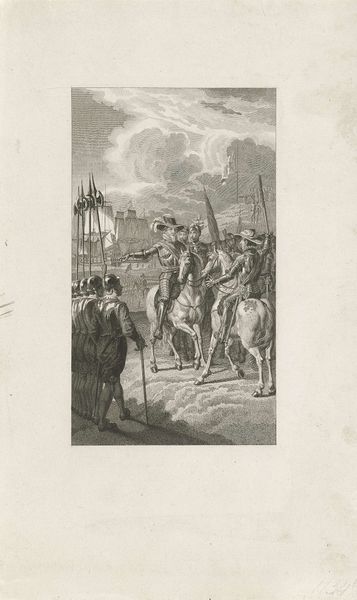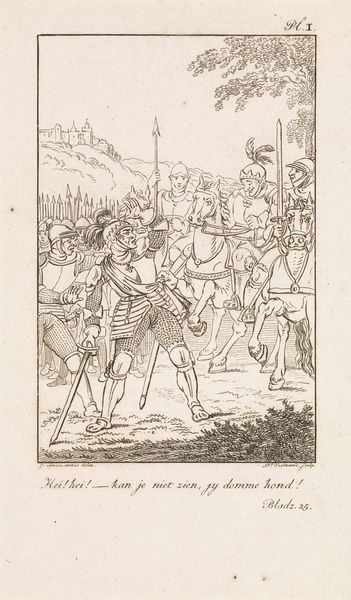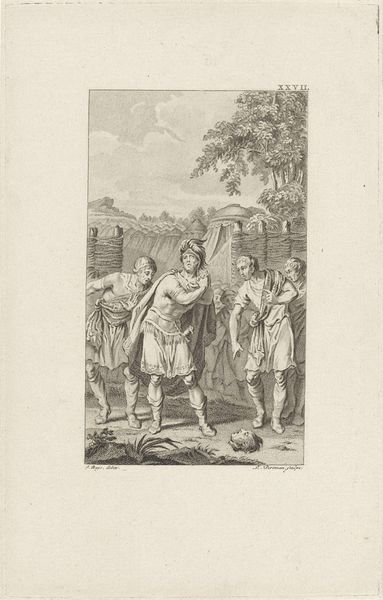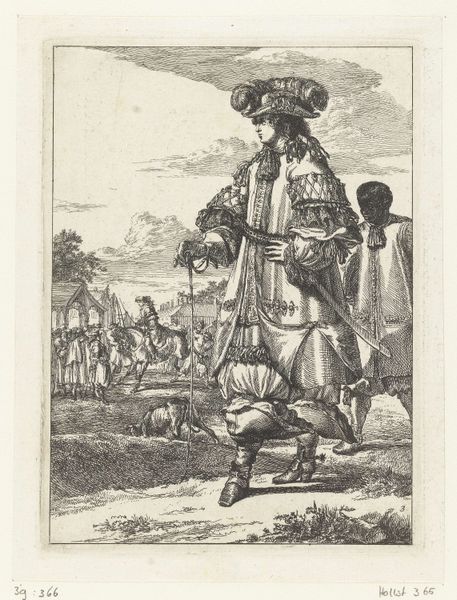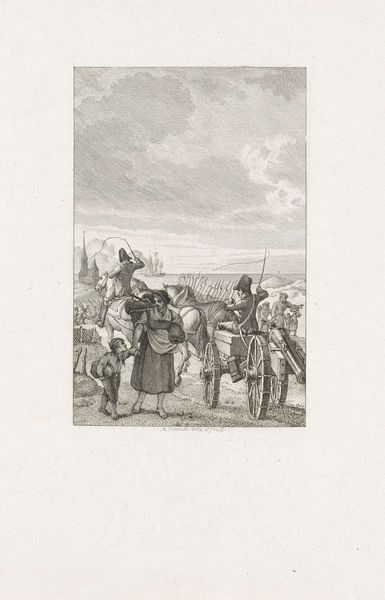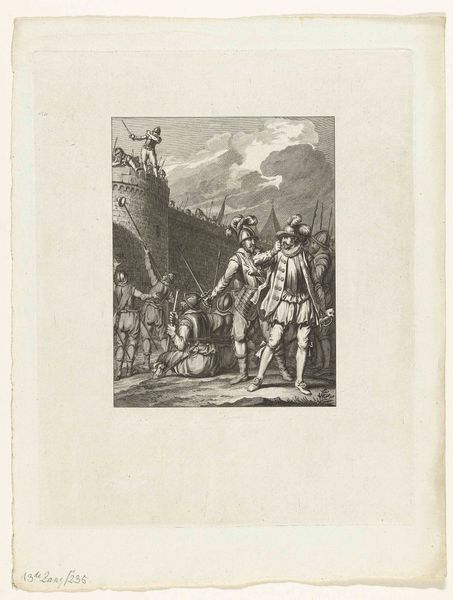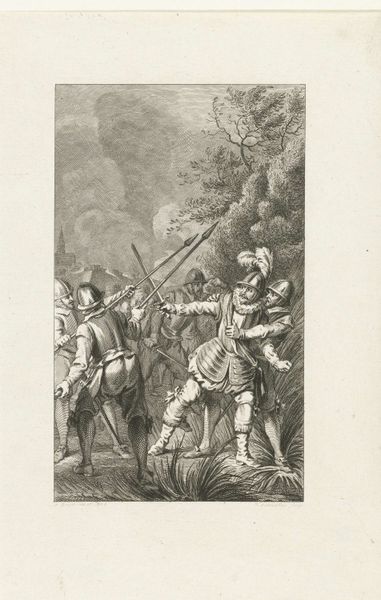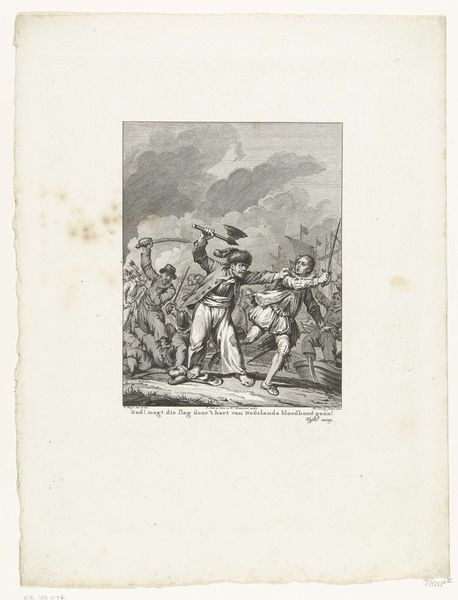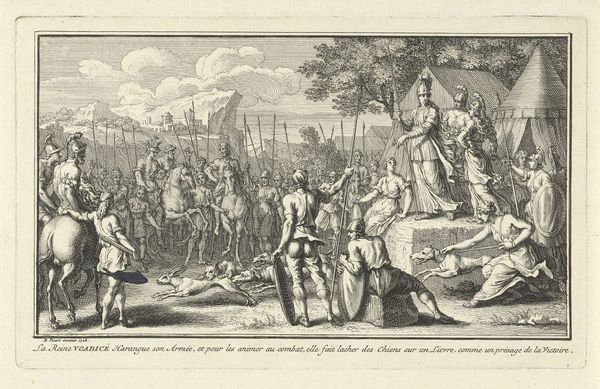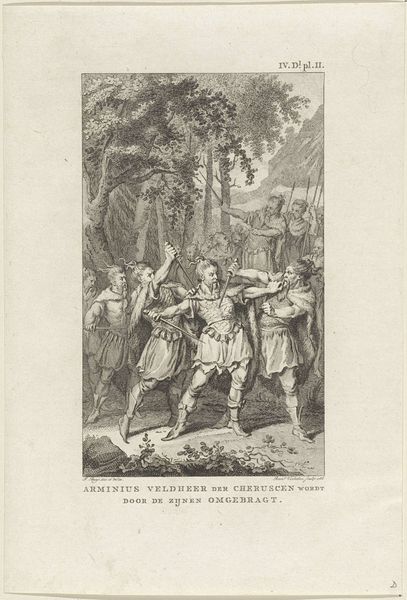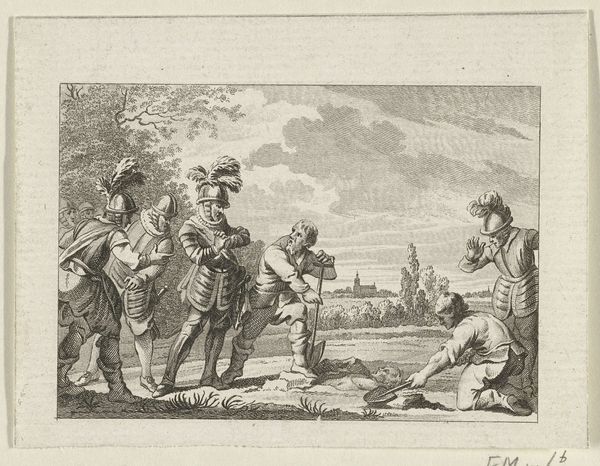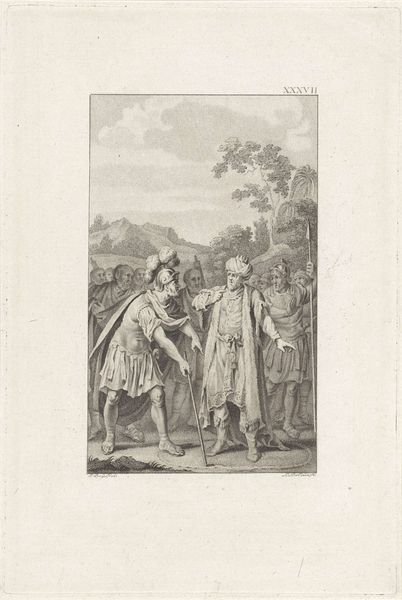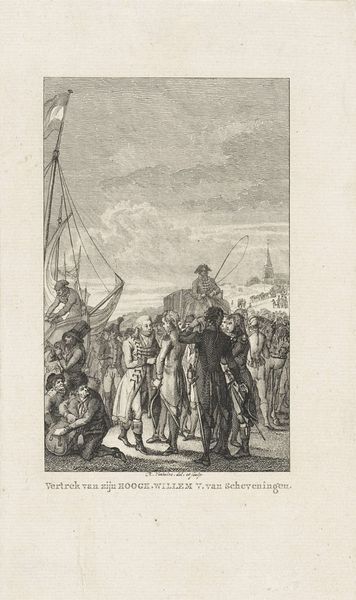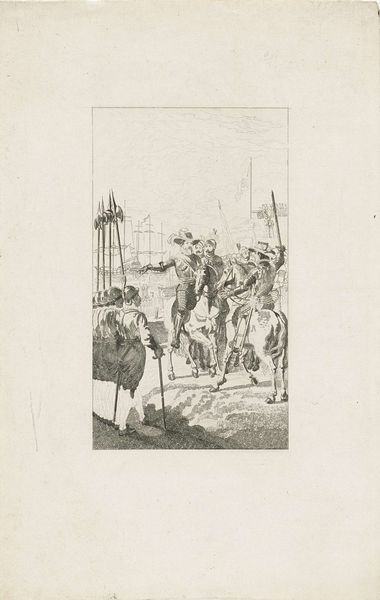
print, engraving
#
narrative-art
#
dutch-golden-age
# print
#
pencil sketch
#
old engraving style
#
landscape
#
classicism
#
orientalism
#
pencil work
#
history-painting
#
academic-art
#
engraving
Dimensions: height 230 mm, width 150 mm
Copyright: Rijks Museum: Open Domain
Editor: So this engraving, "Christoffel Columbus komt aan in Amerika" from 1788 by Reinier Vinkeles, depicts Columbus's arrival. The print's detail is incredible, yet there’s this inherent sense of staged drama that I find unsettling, almost like a theatrical production of colonialism. What stands out to you in this piece? Curator: What jumps out is not just *what* is depicted, but *how* it's rendered. Look at the precision of the engraving, the labor involved in creating this image for mass consumption. This wasn't about capturing a raw "truth," but about constructing a narrative, carefully etching an ideology of conquest for widespread distribution and absorption by a Dutch audience. Consider the raw materials used – the metal plate, the ink, the paper – and the systems of production that made this image available to many. Editor: That's interesting. The precision seems almost celebratory, which jars with the knowledge of what followed colonization. Does focusing on the materials used shift our understanding of the work's message? Curator: Absolutely. By foregrounding the process and materials, we're pushed to question the intent. Vinkeles wasn’t just illustrating history; he was participating in its construction through readily available consumer goods: the print itself. The very act of producing and circulating such images normalized this historical view, turning colonization into a digestible and marketable narrative. We see then that it isn't merely ‘art’ but a crafted commodity reflecting and reinforcing particular social values of its time. Editor: I never considered how the print itself became part of the colonial machine, perpetuating ideas. Thanks for helping me think about the art's context beyond the subject matter. Curator: Indeed. Examining materiality exposes how artworks participate in larger networks of power and consumption. A truly powerful perspective.
Comments
No comments
Be the first to comment and join the conversation on the ultimate creative platform.
